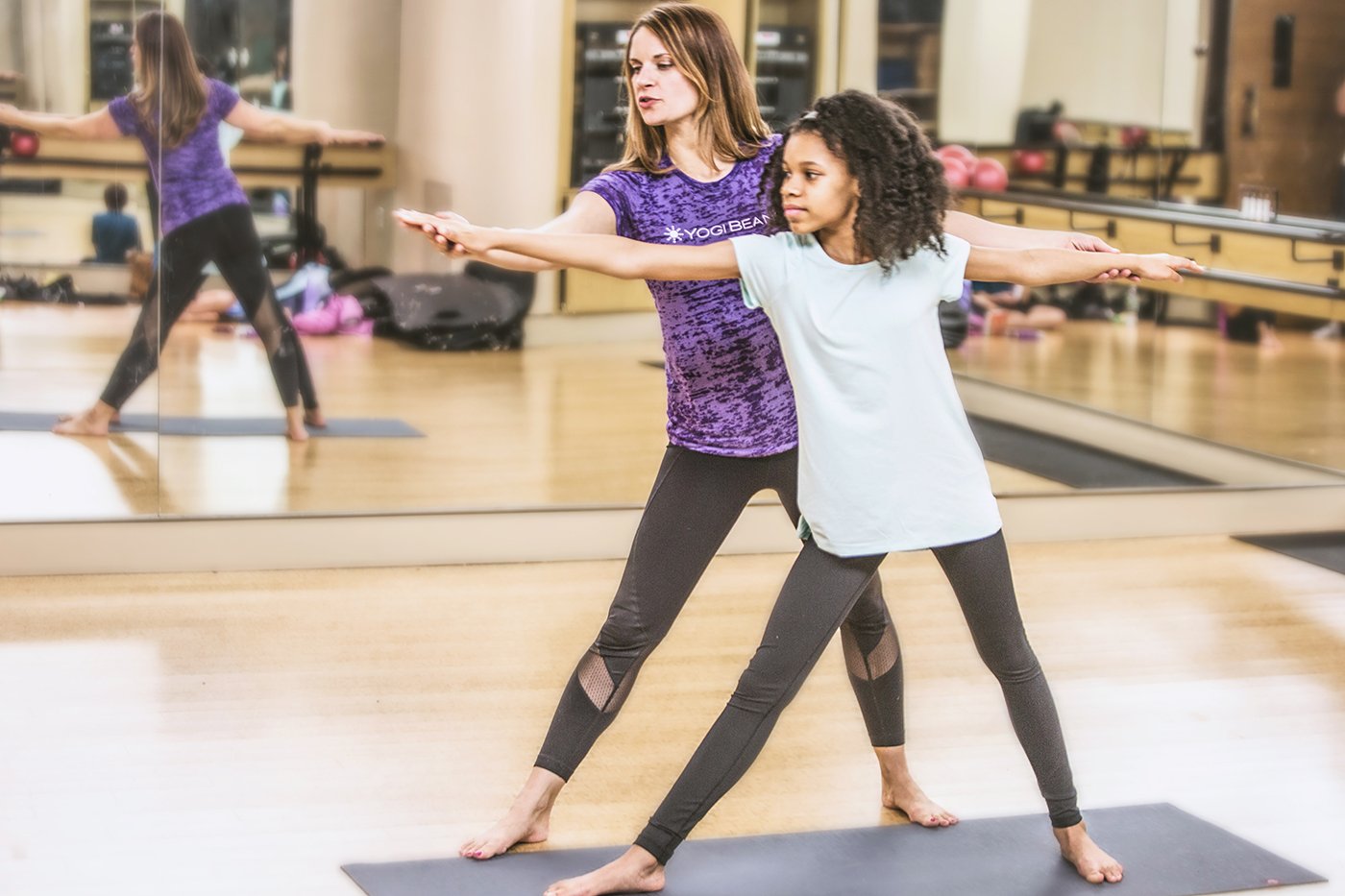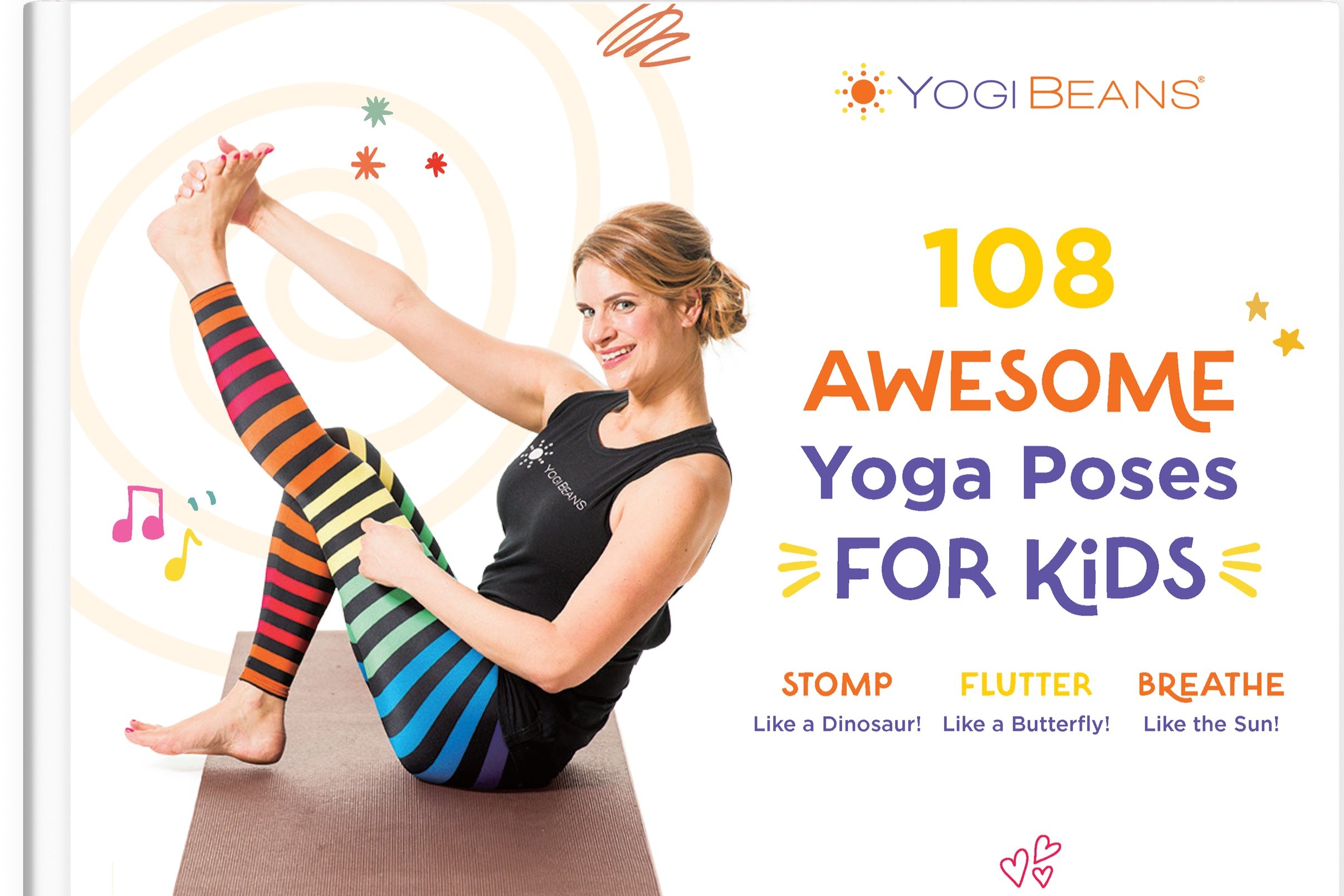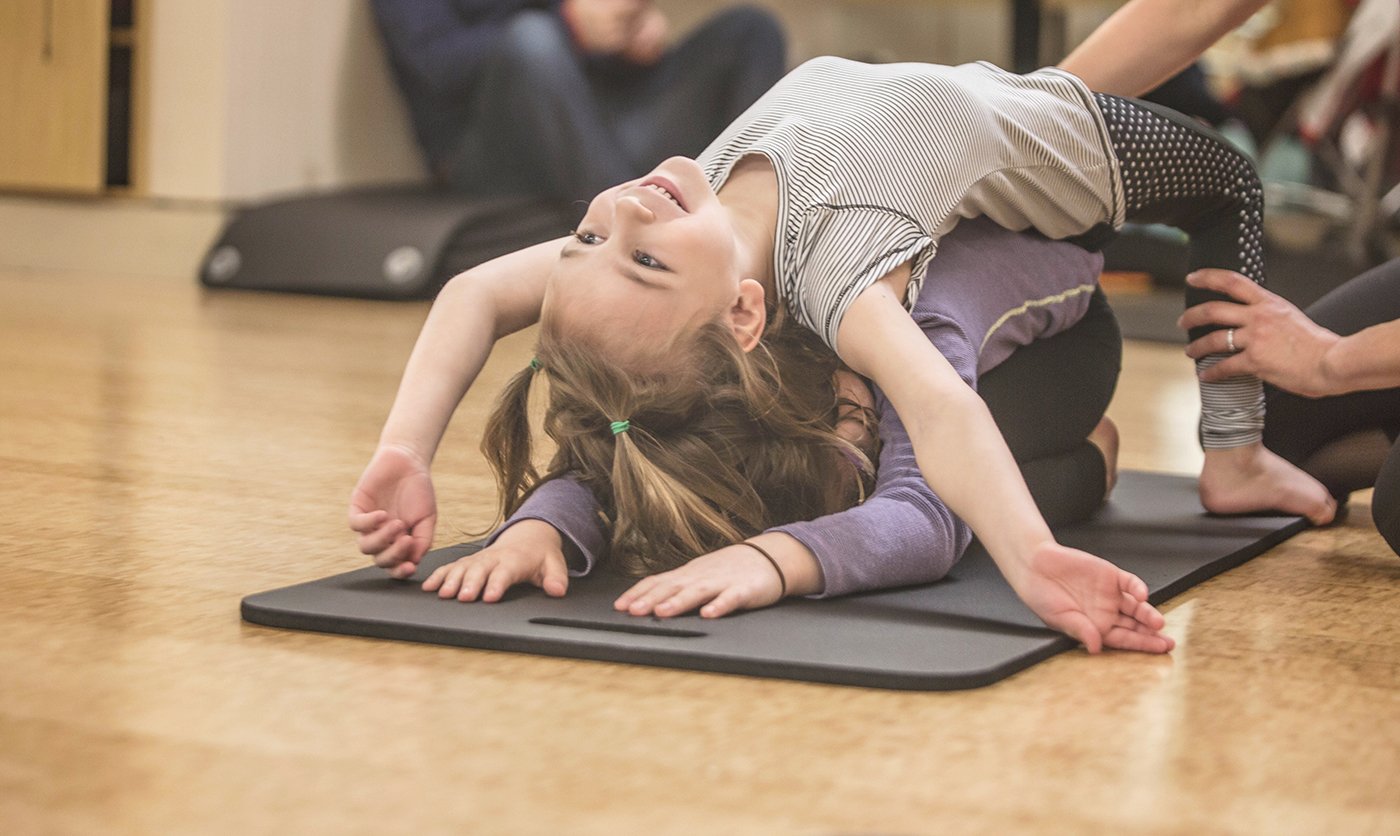The Ultimate Guide to Plan the Best Kids Yoga Lesson
Learn how to prepare a super fun kids’ yoga class
Would you like to plan the best kids' yoga lesson filled with exciting poses, engaging games, and heaps of fun?
You’re in luck because, at Yogi Beans, we have crafted the perfect guide to assist you in creating a fantastic yoga class for children.
Designing a kids' yoga lesson requires a thoughtful approach to engage and inspire young minds. At Yogi Beans, we've been providing yoga teacher training and guiding parents and childcare professionals on the safest and most enjoyable ways to engage children in yoga.
Here's a comprehensive guide to help you plan the best kids' yoga lesson:
How do you structure a yoga class for kids?
1. Welcome them with Warmth and Excitement (10 minutes):
Greet the children with a lot of enthusiasm.
Open the class with a circle.
Use a simple icebreaker activity to help them get comfortable and engaged: Play some music and invite them to move their bodies and shake out their wiggles for a couple of minutes.
Once everyone had a bit of fun and feels more relaxed and connected, you can start the class with a tune-in activity such as ringing a bell, singing a song or saying the sound of OM
2. Introduction to Yoga (1-3 minutes):
Briefly explain what yoga is in a child-friendly manner.
Share the benefits of yoga, such as flexibility, balance, and relaxation.
3. Breathing Exercises (5 minutes):
Teach simple and playful breathing exercises (lion’s breath).
Relate breath awareness to calming the mind and body.
4. Warm-Up (5 minutes):
Start with gentle warm-up exercises to prepare their bodies for movement (animal walks, neck rolls…).
Incorporate activities like stretching, reaching, and light cardio movements.
Teach Sun Salutations
Our Yogi Beans song, Mountain Moves, which is found wherever music is streamed, is great for a simple warm up!
Listen to Yogi Beans Music on Spotify or Apple Music
5. Theme Introduction (1-3 minutes):
Introduce the theme or the “yoga adventure” for the session (animals, superheroes…).
Connect the theme to the benefits of specific yoga poses. (eg: Outerspace theme can teach us about the unknown)
6. Yoga Poses (10 minutes):
Demonstrate and guide children through a series of age-appropriate yoga
Incorporate poses related to the chosen theme.
Feeling a bit low on inspiration? No worries! We've whipped up a fantastic book packed with over 108 lively kids' yoga poses, each paired with a story idea. Give it a chance, this book might just become your ultimate sidekick in the awesome adventure of teaching yoga to kiddos!
7. Games (15 minutes):
Integrate yoga-themed games that require focus and concentration.
Include unifying activities that promote collaboration and teamwork.
Try incorporating one high-energy game and one low-energy game
Need more yoga games? Our online trainings will teach you many fun mindful games that can be incorporated into your children’s yoga classes.
8. Creative Expression (10 minutes):
Allow children to express themselves through art or movement.
Incorporate a creative element related to the yoga theme (dance, drumming, drawing, and journaling prompts for older children, etc.)
9. Relaxation/Mindfulness (5 minutes):
Guide children through a brief relaxation or mindfulness exercise.
Use props like soft music or imagery to enhance the experience.
Always end with the final resting pose Savasana
10. Closing and Gratitude (5 minutes):
Gather the children for a closing circle.
Express gratitude, recap the session briefly, and encourage sharing.
Keep this in mind—it's all about finding the groove between order and playfulness. Strike that sweet balance where structure meets flexibility, leaving plenty of space for creativity and the unexpected joys sparked by the kids' reactions and interests!
Don't Forget to Make it Fun and Interesting
Preparing a kid's yoga class that is as fun as a circus requires a dash of creativity, a sprinkle of playfulness, and a whole lot of variety. It's like planning a party where the guest of honor is laughter!
Here are some top tips to turn your class into the coolest hangout for tiny yogis:
Find Your Kid’s Yoga Theme:
Plan your class around an exciting theme like animals, nature, or favorite storybook characters. Weave the theme into yoga poses and activities for a cohesive and captivating experience.
Create an Interactive Kid Yoga Storytelling:
Tell stories that involve yoga poses. Encourage children to act out the characters or elements of the story through corresponding poses. Allow them to contribute to the story or suggest their own imaginative twists.
Use Props and Visuals:
Integrate colorful mats, props, and visual aids to enhance engagement. Props like soft toys or imagery cards can make the session more interactive and enjoyable.
Incorporate Games:
Introduce games that involve yoga poses, like "Musical Mats” (musical chairs with yoga mats and yoga poses). Games add an element of excitement and keep the children actively participating.
Creative Transitions:
Make transitions between poses fun by incorporating playful movements or short dances. Use music and encourage the children to express themselves freely during transitions.
Music and Movement:
Use lively and age-appropriate music to accompany poses and activities. Incorporate rhythmic movements or dance breaks to keep the energy high.
Partner Poses:
Introduce partner or group poses to foster teamwork and social interaction. Children can work together to create shapes or support each other in balancing poses.
Expressive Breathing Exercises:
Teach simple breathing exercises with imaginative names. Connect breath awareness to fun activities, making it an integral part of the session.
Encourage Choice and Independence:
Provide options for poses and activities, allowing children to choose what resonates with them. Offer opportunities for them to express their preferences and ideas.
Celebrate Achievements:
Acknowledge and celebrate small achievements, whether it's holding a pose or expressing creativity. Create a positive and supportive environment.
We hope that you enjoyed our ultimate guide to plan the best kid’s yoga lesson!
If you're eager to dive deeper into the world of kid's yoga or want to specialize in a particular aspect of bringing zen to tiny tots, Yogi Beans has a treasure trove of training waiting for you! Whether you're laying the foundation for teaching yoga to kids, exploring the intricacies of Kids' Yoga anatomy, or delving into the world of kid's yoga for special needs, we've got a kaleidoscope of skills to add some sparkle to your yogi journey.
Connect with us!
Welcome Friends!
Yogi Beans is a yoga and wellness company for children. Come make the world a brighter place with us!
Teach Kids Yoga with Confidence & Joy!
Here is why you should absolutely try Laughter Yoga!
Laughter is the best medicine to relieve stress
Why is the apple so good at yoga? He has a great core!
When it comes to relieving stress, soothing tension, or even to just improve your mood — laughter is the best medicine! This is phrase is said so often because laughing has so many important benefits.
In Sanskrit, the word līlā (lila) translates to “divine play.” We love to incorporate this phrase into our children’s yoga classes and in our children’s yoga trainings so that adults who work with children can begin to incorporate this sentiment. The idea of “divine play” plays a role in laughter in yoga.
Laughter allows us to release our inhibitions and embrace more joy in our experiences. As adults, we have learned that such expressions can also have negative consequences such as feeling embarrassed. It is important to invite this element of joy, silliness, and laughter with our children because it allows them to embrace out-of-the-box thinking and to expand their individual boundaries.
What is Laughter Yoga?
The practice of Laughter Yoga supports deep breathing (pranayama) combined with playful exercises that promote energy, uplift our mood, and also provide many health benefits. Laughter Yoga is a practice designed by Dr. Madan Kataria in 1995. Dr. Kataria began his study of laughter yoga based on its many important psychological and physiological benefits.
In his work, Dr. Kataria proposed that laughter can be taught and experienced in community and group exercises. Laughter Yoga is a practice where students learn to laugh on cue rather than relying on people, things, or experiences to bring them joy. The practice provides various movements, breathing exercises, and activities that teach people to create intentional laughter.
Most Laughter Yoga classes for adults begin with simple breathing and chanting to help students turn inward and begin to relax. They also may include improv exercises to help you relax and laugh. While it may feel silly to chant “he-he-ha-ha,” the exercise allows you to leave your ego at the door and practice the element of ahimsa, which yogis know is the Sanskrit word for non-judgement.
For children, Laughter Yoga is a way to bond with friends and family members in a non-competitive way that also boosts everyone’s mood!
What are the benefits of Laughter Yoga?
A good laugh has both short-term and long-term effects.
Short-term, laughing can relieve stress and tension, stimulate oxygen in the body, as well as lower blood pressure. Laughing releases our happy hormones (dopamine and serotonin) while suppressing our stress hormone (cortisol). Long-term, laughing can improve your immune system by relieving pain as the good endorphins from a laugh stimulate a response similar to painkillers, thus promoting an overall good mood. Laughing is an antidote for tension relief, it increases blood flow to the brain and also serves as a cardiovascular exercise.
Laughter Yoga is especially beneficial for children as it is a great way to support cognitive function. With increased blood flow to the brain, laughter can improve focus, memory, and support brain development.
Along with the physical benefits of Laughter Yoga, the practice also provides a deeper connection between people, family members, children and people in their community.
If you have not already, try to practice Laughter Yoga with your loved-ones; it is by far one of the most effective ways to strengthen your family bond!
5 easy Laughter Yoga exercises for you and your loved ones
Children are inherently free of inhibition. They are always looking for joy in the things around them, laughing at jokes, making other people laugh and they love funny faces.
Babies and children both laugh and smile in their sleep! Here are some ways that we like to introduce laughter and play in yoga :
Mirror Me: In our family yoga classes, we introduce a game called “Mirror Me.” In this game, caregiver and child sit facing one another. With one person as the leader, they can begin to model different movements and have the other person follow. To incorporate the concept of laughter yoga, the leader can begin to make funny faces, or make funny movements, and then gradually begin to make sounds that build up into either silly sounds (to make the other person laugh) or different sounds of laughter. The other person is then asked to model the faces of movements.
Telephone Laughter: Similar to the game of Telephone, children being by standing in a circle. Think of a secret to celebrate such as “no school tomorrow!” or “ice cream for dinner!” As children hear the celebration, ask them to high-five and cheer with one another until you get to the last person.
Laughing Breath/Breathing Staircase: This exercise begins with each child lying his or her head gently on another child's belly. Ask children to notice their partner’s breath, and how it affects their head movement. Ask them to let out a hearty laugh and explain what is happening. The more children participating, the more laughter will erupt!
Joker and the King: This is a fun and silly game that can be used when your group is feeling cranky or tired. One player is the king and they start out by saying “Betcha’ can’t make me laugh.” The other players come up to the king one at a time and, moving with yoga poses, to see if they can be so silly that they make the king laugh.
Joking Warriors: In our kids yoga classes, we teach warrior poses (ages 5+) succinct with affirmations (e.g., I AM: Proud Warrior). We often ask children to lead the group, recite an affirmation, and come into a yoga pose.
So, what’s the punchline? Laughter yoga is a great way to support your child mentally, physically and spiritually. The practice allows children to build resilience, express themselves, and connect with friends and loved ones.
For more information on Yogi Beans, to experience these exercises in our trainings, or how you can bring children’s yoga to the children in your life, visit our website!
Anne Davidson is a senior teacher trainer and business developer at Yogi Beans. Connect with Anne at @anneedavidson on Instagram
Connect with us!
Welcome Friends!
Yogi Beans is a yoga and wellness company for children. Come make the world a brighter place with us!
Teach Kids Yoga with Confidence & Joy!
Watch! Book release & talk with 92NY and Yogi Beans
Book release and talk with 92NY and Yogi Beans
Watch the 92NY Spark Your Health event for a children’s movement, wellness-inspired talk and book release of 108 Awesome Yoga Poses for Kids with founder of Yogi Beans, Lauren Chaitoff, and moderated by Katera Noviello-Kapoor.
Topics covered in the talk include:
How we can help children foster their mind-body connection
How we can encourage children to move more in a highly sedentary society
How can yoga support the growing mental health crisis facing our children?
How to incorporate yoga poses into your child’s morning & evening routines (and the benefits of doing so)
The philosophy behind bringing yoga into the classroom
Order your copy of 108 Awesome Yoga Poses for Kids.
Yogi Beans is a yoga and wellness company for children. Come make the world a brighter place with us at @yogi_beans on Instagram
Connect with us!
Welcome Friends!
Yogi Beans is a yoga and wellness company for children. Come make the world a brighter place with us!
Teach Kids Yoga with Confidence & Joy!
Kids yoga: when should kids start?
Learn when kids can start practicing yoga!
Kids yoga classes provide children with the opportunity to connect the body, mind and heart. These classes teach kids to internalize concepts of self–awareness, compassion,
In a kids’ yoga class, children are free to play, explore, question and grow their yoga practice in a non-judgmental and welcoming environment. Children are faced with numerous expectations in both school and their social lives, while also constantly stimulated by the internet, gaming, and social media. Now more than ever, the tools necessary to live a more mindful life are just as important for young people as they navigate the world.
Many have asked the question: can yoga really help children balance life and maintain a child’s mental health and wellbeing? This article will tell you everything about kids yoga benefits and when your children can start practicing.
Is Yoga Really Appropriate for Children?
Many schools around the country are beginning to incorporate yoga, SEL practices, and meditation within the school day because of yoga’s benefits for children. Some of these include increased strength and flexibility, breath and body awareness, increased focus and learning to relax.
In a 2016 Harvard Medical Study, “A growing body of research has already shown that yoga can improve focus, memory, self-esteem, academic performance, and classroom behavior, and can even reduce anxiety and stress in children.” * These studies also posit that with the benefit of increased focus and learning to relax, yoga can help children with attention deficit hyperactivity disorder (ADHD), support executive functioning, and can aid children with special needs.*
Today, children are experiencing more stress than ever to meet the standards of education, their caregivers, and social expectations. The practice of yoga is a tool that can help children deal with these stressors and provide the tools to help self-regulation.
When Should Kids Start Yoga?
Children are natural yogis and many studios begin to incorporate yoga for children as young as 6 weeks of age. The exercises in a baby yoga class enable a connection between baby and caregiver, and aid in physical and mental development.
As children grow, yoga classes for toddlers, preschoolers, elementary aged children, and tweens and teens begin to enhance the teachings of yoga by incorporating a more physical practice and layering in the mindful and meditative connection to the body.
At Yogi Beans, our kids yoga trainings are designed for real world applications in studios, classrooms, virtually and beyond for all age groups. For example, our Baby Bean Yoga Training teaches simple baby stretches, songs and poses designed for you to lead a class for infants to crawlers. Our training, The Building Blocks of Teaching Yoga to Kids, focuses on how to teach children from ages 2-10.
If you’re looking to learn on your own time, Yogi Beans offers a Video On Demand Training that provides a comprehensive look into creating and teaching a children’s yoga class including Pranayama (breathing), Asana (poses), mindful games, and meditation and Savasana.
What Type of Yoga is Good for Kids?
Creating an age-appropriate structure for a children’s yoga class is important. What works for a two-year-old will certainly not work for a ten-year-old!
The younger the child, the shorter attention span they have and the more movement activities they need.
Whereas with older children, refinement of yoga asanas as well as deeper looks into meditation, journaling, and mindfulness can begin to be applied.
Baby Yoga (6 Weeks-Crawlers): In a baby yoga class, anything can happen! These little beans are just beginning to recognize their body and explore their body’s limitations. These classes involve a caregiver to be present to assist the baby’s needs. Like all children, babies learn from example.
These classes provide an opportunity for caregivers to move their body in traditional yoga poses, while also allowing the baby to experience songs, gentle movements, and begin to form that mind-body connection.
Yoga for Toddlers (Ages 2-3): Children of this age have a lot of energy and once they are on their mats, expect to see a lot of movement! The general instruction and approach to class ought to be lively, lighthearted and flexible. The class should move at an energetic pace and the poses should be kept simple.
These classes involve songs, chants, and lots of contrast, while also exploring big explosive movements, before finding opportunities for stillness and calm.
Yoga for Preschoolers (Ages 3-4): Since younger children have short attention spans, your class format for this group still moves at a fast pace. Children of this age learn best through simple hands–on exercises, use of fun props and the repetition of songs, games and playful yoga poses.
Most importantly, class structure should remain consistent each week; obedience to directions should be encouraged but, generally speaking, not disciplined.
Yoga for Elementary Schools (Ages 5-7): Children of this age are advancing in physical and cognitive development and can readily engage in group discussions.
Make class extremely imaginative and introduce all age–appropriate poses and activities in a thoughtful sequence. Incorporate easily understood explanations of breathing techniques, yoga poses and concepts related to focus and concentration, while keeping the overall class environment light and fun. Teach the importance of following directions, and the consequences of misbehavior and disruption on the group’s experience.
Yoga for Late Elementary Schools (Ages 8-10): Instruction for this age group should begin to incorporate more challenging concepts and poses. Poses should be held for longer durations with a basic introduction to postural alignment. Focus on working both sides of the body to acknowledge the imbalances in all of us and increase strength and flexibility. Discussion of basic yogic concepts and terminology can be infused throughout class as well as pranayama (breathwork) such as Nadi Shodana breathing.
Children in these classes can also begin to explore more meditation and different exercises, where they have to tune inward, such as journaling, coloring mandalas, or the game Rose and Thorn.
If you want to learn how to practice yoga with your kids safely, have a look at our online courses. They’re easy, affordable, and you can learn how to practice yoga with your children at your own pace.
Whether you’re a caregiver, teacher, yogi, or someone who has a passion for yoga and working with children, the benefits of incorporating this will help children to become their highest and most mindful selves.
Anne Davidson is a senior teacher trainer and business developer at Yogi Beans. Connect with Anne at @anneedavidson on Instagram
Connect with us!
Welcome Friends!
Yogi Beans is a yoga and wellness company for children. Come make the world a brighter place with us!















